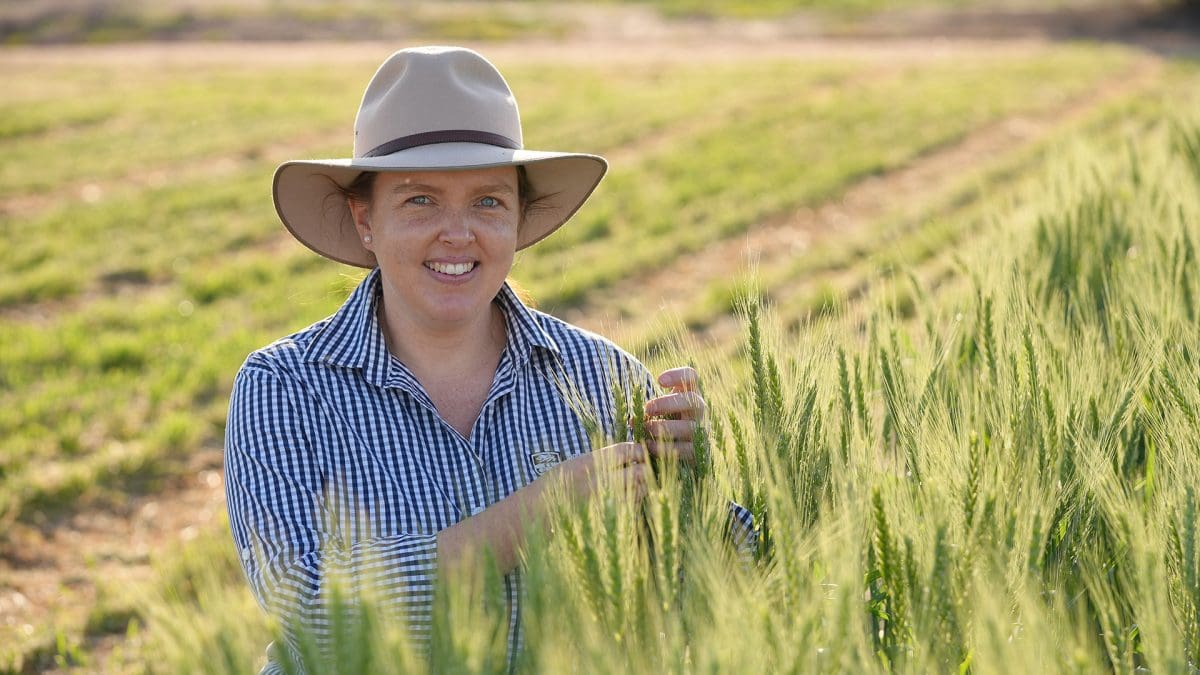
University of Sydney’s Rebecca Thistlethwaite is working to identify the most heat tolerant genes in wheat so they can be incorporated into new and existing lines. Photo: GRDC
A COLLABORATIVE project between the University of Sydney, InterGrain, Agriculture Victoria and the Western Australian Department of Primary Industries and Regional Development is working to breed more heat-tolerant wheat varieties.
The $4-million project proposes to deliver by 2026 a minimum of five adapted wheat pre-breeding lines with at least 10-per-cent higher yield than the current highest-yielding cultivars under heat stress during grain filling.
It is hoped these varieties will reduce the devastating effects of a hot finish on grain crops across Australia, with heat stress estimated to cost the grains industry $37M annually in wheat alone.
The research has been made possible thanks to an investment from the Grains Research and Development Corporation (GRDC).
University of Sydney agricultural scientist, Rebecca Thistlethwaite, said the heat-tolerant materials and associated genetic tools are being given to commercial breeding companies, allowing them to develop new wheat varieties with better heat tolerance.
The research searches the world for new traits, aiming to identify the most heat-tolerant genes for incorporation into new and existing lines.
This pre-breeding approach decreases the time it takes to breed new wheat lines, reducing the time from five to six years to two to three years.
Dr Thistlethwaite said growers, especially in warmer climates, have expressed concern about heat stress impacting crops and the need for the grains industry to respond to a changing climate.
“Grower feedback is the main reason we do this type of work,” Dr Thistlethwaite said.
“Growers are facing a warmer, changing climate so it’s a no-brainer for us to respond to that as soon as possible.
“We’ve made it a priority to work on breeding better heat-tolerance lines now, while we still have time to do it, because if we leave it too long, the industry will get stuck.”
Three-tiered approach
Dr Thistlethwaite said the project had used a three-tiered approach to screen large numbers of materials, primarily in the field.
It starts with identifying genotypes that limit the effects of drought stress from field trials.
These high-performing genotypes are then placed in heat chambers in the field to see how they perform under heat shock, and then any genotypes that maintained adaptation in the heat chambers are taken to glasshouses to be looked at in more depth.
The best lines identified through this process are then crossed to produce new materials, which are subsequently tested at 40 InterGrain sites across Australia, allowing further evaluation of the lines’ performance.
Dr Thistlethwaite said this should result in producing lines that not only remain stable during a normal growing season with common pressures, but will also remain stable if growers were impacted by a hot finish.
“These new lines will be enriched for heat tolerance at grain filling and delivered to wheat breeders with genomic information to aid selection and incorporation of tolerance into new varieties.”
“We’re not producing lines that would fall over in a normal year but do well with heat pressure – we’re selecting to generate lines that will do well across all bases.”
Heat tolerance work vital
GRDC genetic technologies officer, Prameela Vanambathina said GRDC placed high importance on helping growers manage a changing climate and investing in research projects that help boost grain production on farm.
“Increase in temperature is a significant constraint with predicted modelling, indicating an average of 14pc of yield losses to Australian grain growers each year,” Ms Vanambathina said.
“Through this investment, GRDC is aiming to deliver heat-tolerant wheat varieties adapted in an Australian environment so that growers can mitigate potential yield losses and produce quality crops in all seasons.”
All new materials developed by the project will be available to all commercial entities and researchers two years after validation.
Source: GRDC

HAVE YOUR SAY